Learn
What is LiDAR?
Light detection and ranging, or LiDAR, uses laser technology to measure either distance or the presence of a gas. Bridger Photonics makes use of continuous-wave LiDAR in our innovative technologies.
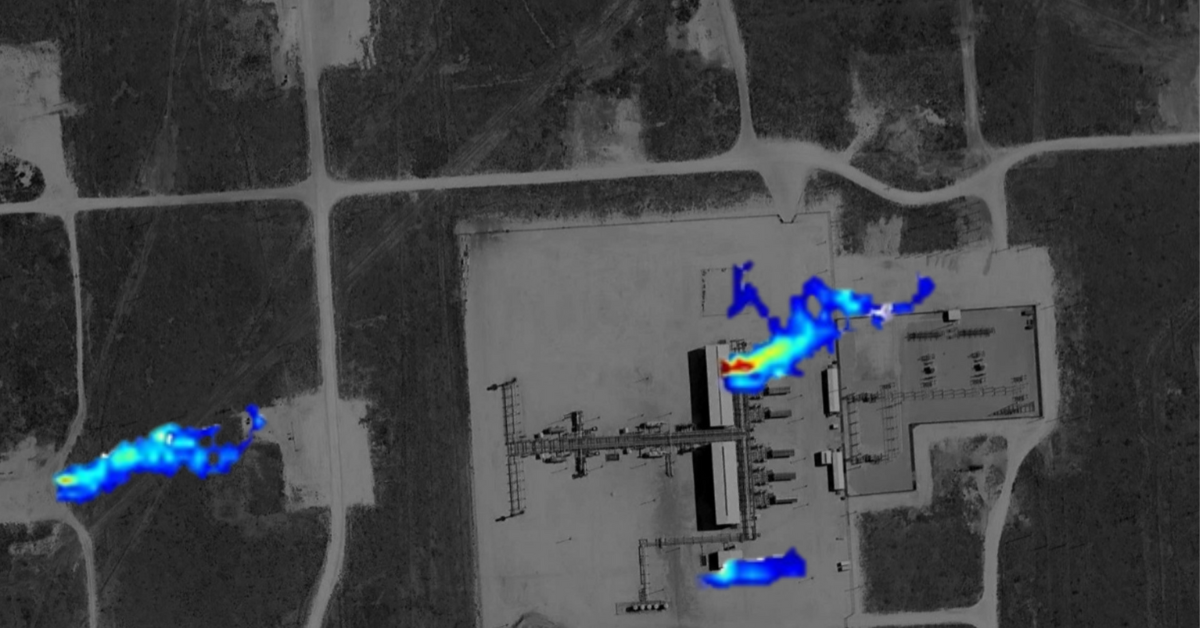
What is LiDAR?
Light detection and ranging (LiDAR) techniques use lasers to create 3D (topographic) or gas concentration (atmospheric) imagery of the surveyed environment. Airborne LiDAR, which involves mounting laser scanners on aircraft, is particularly effective for capturing high-resolution geospatial data across large areas, making it invaluable for mapping topographic features and generating digital elevation models. To understand how lidar works, LiDAR systems emit laser pulses, gather return signals, and create three-dimensional point clouds for various analytical purposes. Both uses for LiDAR can be performed using either pulses of laser light (pulsed lasers) or laser light that stays on all the time (continuous-wave lasers). Bridger Photonics makes use of continuous-wave LiDAR to measure both solid surfaces (hard targets) and gases (soft targets).

TOPOGRAPHIC LiDAR WITH CONTINUOUS-WAVE LASERS
Frequency-Modulated Continuous-Wave (FMCW) LiDAR
FMCW LiDAR uses the frequency (i.e. color) of the laser light to determine distance. This method enables the simultaneous measurement of distance and velocity, generating precise location data. LiDAR technology plays a crucial role in enabling these precise distance and velocity measurements.
How it works:
- Transmit a continuous-wave laser to a portion of the object, where the laser’s frequency is intentionally changed in time.
- Measure the time it takes a certain laser frequency to travel to and return from that part of the object using interferometric techniques.
- Calculate the distance to that part of the object using the constant speed of light.
- Scan the laser beam over the object to determine the distance to all parts of the object and to create 3D imagery.
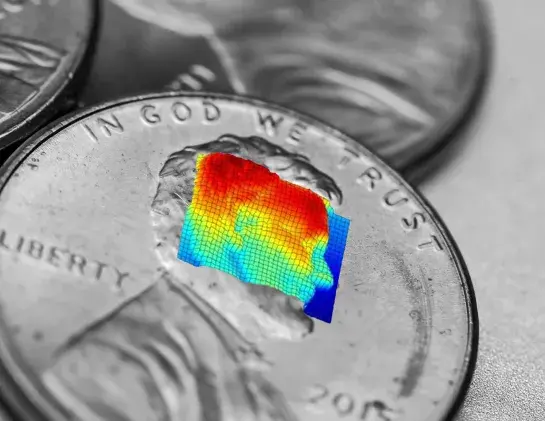
Challenges
More complex than pulsed LiDAR.
Can confuse distance with motion or surface roughness.
Solutions
Allows for better distance resolution than direct-detect LiDAR, enabling the measurement of fine surface structure.
Velocity sensitivity, enabling the ability to directly measure an object’s speed.
Bridger's aerial gas mapping LiDAR technology covers hundreds of sites per scan, reducing site visits.
ATMOSPHERIC LiDAR WITH CONTINUOUS-WAVE LASERS
Continuous-Wave Laser Absorption LiDAR
A continuous-wave laser can be changed or modulated to achieve the same effect as differential absorption. This laser absorption spectroscopy technique is known in various forms as wavelength modulation spectroscopy (WMS), frequency modulation spectroscopy (FMS), or tunable diode laser spectroscopy (TDLAS). Bridger mounts the LiDAR systems on aircraft, so the ground serves as a scattering point of laser light back to the LiDAR system. Airborne LiDAR systems are particularly effective for atmospheric measurements, maintaining accuracy over long distances and providing detailed topographic and elevation models.
How it works:
- Transmit a continuous-wave laser through the gas to the ground with a laser frequency that is known to be absorbed by the gas.
- Modulate the laser’s frequency in time.
- Determine the concentration of the gas in the beam path by measuring the amount of modulated laser light returning from the ground.
- Scan the laser beam to determine gas concentration for all areas and to create gas plume imagery.
- LiDAR instruments used in this process shoot laser pulses to create detailed 3D models and point clouds, essential for accurate gas concentration measurements.
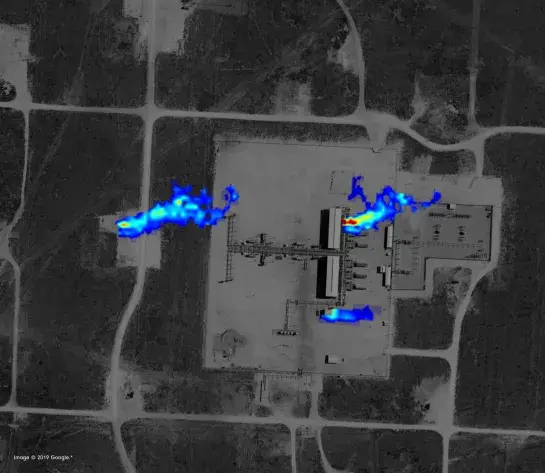
Challenges
Often requires topographical surfaces to scatter laser light back instead of atmospheric particles.
Solutions
Can enable compact, monolithic, and inexpensive laser sources that can be flown on light aircraft or drones.
Can enable fiber delivery for combining with other measurement (e.g. topographical LiDAR) lasers.
Does not require high peak power pulsed lasers for safer operation.
The LiDAR data collected by these systems are crucial for various environmental monitoring and mapping activities, including safe and efficient underwater mapping and assessing storm damage.
TOPOGRAPHIC LiDAR WITH PULSED LASERS
Direct-Detect LiDAR
Using the fact that each gas absorbs a specific frequency of laser light, pulsed DIAL can determine the concentration of a gas by comparing the returning light from a laser pulse that is absorbed by a gas to a laser pulse that is not absorbed by the gas. The integration of the global positioning system enhances the accuracy of LiDAR measurements by precisely determining the position and orientation of the instruments, especially on mobile platforms like airplanes and satellites.
How it works:
- Transmit a laser pulse to a portion of the object.
- Measure the time it takes for the laser pulse to travel to and return from that part of the object.
- Calculate the distance to that part of the object using the constant speed of light.
- Scan the laser pulses over the object to determine the distance to all parts of the object and to create 3D imagery.
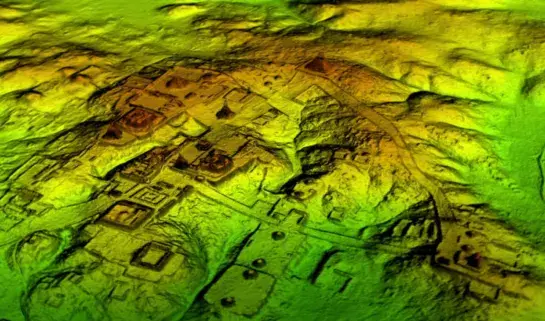
Challenges
Affected by other light sources, which can confuse or degrade its performance.
Distance resolution limited to a handful of centimeters.
Require high-peak power laser pulses, which can cause damage.
Solutions
Greater simplicity than continuous-wave LiDAR, as it is only sensitive to the amount of light returning from the object.
Insensitive to frequency and phase, which can be influenced by motion and roughness of the object.
ATMOSPHERIC LiDAR WITH PULSED LASERS
Pulsed Differential Absorption LiDAR (DIAL)
Using the fact that each gas absorbs a specific frequency of laser light, pulsed DIAL can determine the concentration of a gas by comparing the returning light from a laser pulse that is absorbed by a gas to a laser pulse that is not absorbed by the gas.
How it works:
- Transmit a first laser pulse to the gas with a laser frequency that is known to be absorbed by the gas.
- Transmit a second laser pulse to the gas with a laser frequency that is known to not be absorbed by the gas.
- Determine the concentration of the gas in the beam path by comparing the amount of light returning from the two laser pulses.
- Scan the laser beam to determine gas concentration for all areas and to create imagery.
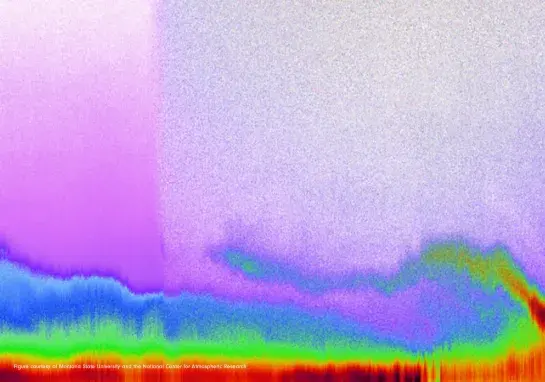
Challenges
Often requires high-peak power laser pulses, which can cause damage.
Often requires large, heavy, complex, and expensive laser systems.
Limited available lasers at the desired frequency.
Solutions
May be able to use scattering from atmospheric particles instead of from objects.
May be able to measure from greater distances.
Ready to Reduce Your Methane Emissions?
Gas Mapping LiDAR provides unparalleled detection, localization, and quantification of methane emissions using aerial LiDAR technology.